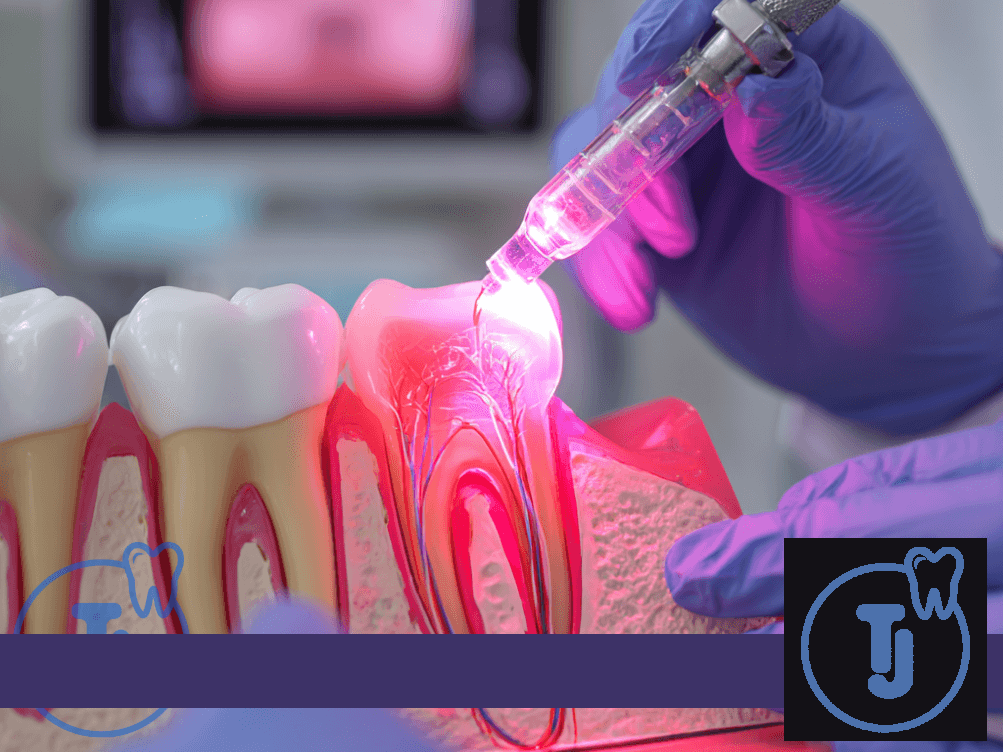Root Canal Treatment
Best Root Canal Treatment (RCT) in Cuttack.
When Your Tooth Speaks, Listen.
That lingering toothache, the jolt of pain when sipping tea or biting into something cold. A strange sensitivity that won’t let go. These aren’t just everyday discomforts—they’re your tooth’s way of asking for help. And at Tooth Junction, we’re here to answer that call.
Root canal treatment may sound intimidating, but in reality, it’s one of the most powerful ways to save what’s yours—your natural tooth, your confident smile, and your peace of mind.
Using modern techniques and gentle hands, we turn what used to be a dreaded procedure into a surprisingly smooth experience.

What is Root Canal Treatment ?
Inside every tooth is a soft tissue called the pulp, which contains nerves and blood vessels. When this pulp becomes infected due to deep decay, cracks, or trauma, it can lead to intense pain and even abscesses. A root canal involves carefully removing the infected pulp, cleaning and disinfecting the root canals, and sealing the tooth to prevent future issues.
Contrary to popular belief, a root canal isn’t painful—it’s what removes the pain.

Signs You May Need a Root Canal
Persistent or throbbing toothache
Sharp pain when chewing or biting
Sensitivity to hot or cold that lingers
Swelling or tenderness in the gums
Darkening or discoloration of the tooth
Pimples or boils on the gums (abscess)
If you experience any of these symptoms, early diagnosis and treatment can save your tooth and prevent further complications.
Step-by-Step: The Root Canal Treatment Process
At Tooth Junction, we ensure your root canal treatment is smooth, painless, and thoroughly explained. Here’s what to expect during the procedure:
How Root Canal Treatment Helps You
Relieves Tooth Pain
RCT eliminates the source of infection and inflammation, providing lasting relief from constant toothache or sensitivity.Saves Your Natural Tooth
Instead of extracting the damaged tooth, RCT allows you to keep it intact and functional for years.Restores Normal Chewing & Biting
After RCT and crown placement, you can chew comfortably without discomfort or pressure.Prevents the Spread of Infection
By removing infected tissue, RCT stops the bacteria from spreading to surrounding teeth, bone, or your bloodstream.Preserves Facial Structure & Smile
Saving your natural tooth helps maintain jawbone health and prevents facial sagging caused by tooth loss.Boosts Confidence
A healthy, pain-free smile improves self-esteem and lets you speak and laugh confidently.Cost-Effective in the Long Run
Compared to extractions followed by bridges or implants, RCT is often more affordable and durable over time.Quick Recovery & Minimal Downtime
Most patients resume normal activities the same or next day, with minimal discomfort after the procedure.
FAQs
Other Treatments
- All On 4 & 6 Implants
- Bad Breath Treatment
- Braces Treatment
- Ceramic Braces
- Dental Crown & Bridge
- Dental Filling
- Dental Implants
- Dental Veneers
- Dentures
- FMR
- Fluoride & Dental Sealants
- Gum Treatment
- Invisible Braces
- Oral Cancer
- Overdenture
- Preventive Orthodontics For Kids
- Root Canal Treatment
- Self Ligating Braces
- Smile Makeover
- Single Sitting Root Canal Treatment
- Teeth Cleaning
- Teeth Whitening
- Wisdom Tooth Removal
